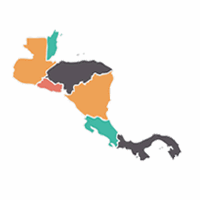Please Sign in to view recently saved searches.
Central America Transit B/L trade database includes shipping details from eight countries: Mexico, Guatemala, Belize, El Salvador, Honduras, Nicaragua, Costa Rica, and Panama. Central America transit B/L data focuses on transportation specifics and cargo tracking, which can significantly enhance a company's logistics management, optimize supply chain operations, reduce inventory costs, and improve delivery punctuality.
Central American nations have fostered international trade by entering into free trade agreements. For instance, the Dominican Republic-Central America-United States Free Trade Agreement (CAFTA-DR), which came into effect in 2006, has notably boosted trade between Central American countries and the United States. Additionally, the free trade agreement between China and Nicaragua marks a significant milestone in the region's international trade development. This agreement covers various areas including goods trade, services trade, and investment, and is expected to further enhance economic and trade cooperation between the two parties.
Despite these advancements, Central American countries face challenges in international trade. The rise of protectionism in the United States poses a threat to economic growth and national development. Moreover, inadequate investment in infrastructure hinders the integration of Central American economies into the global supply and value chains. Nevertheless, international trade in Central American countries continues to grow, demonstrating resilience and potential for further development.
Do you want to understand the market demand in Central America? Do you wish to expand your international market in Central America? Are you seeking more cooperation with clients and reliable suppliers in Central America?

Sample Data


Are you interested in the activities of your competitors in the Central America market?
